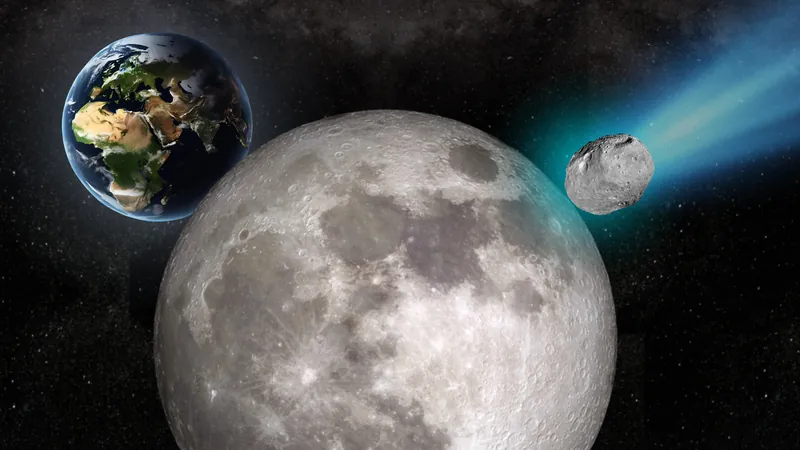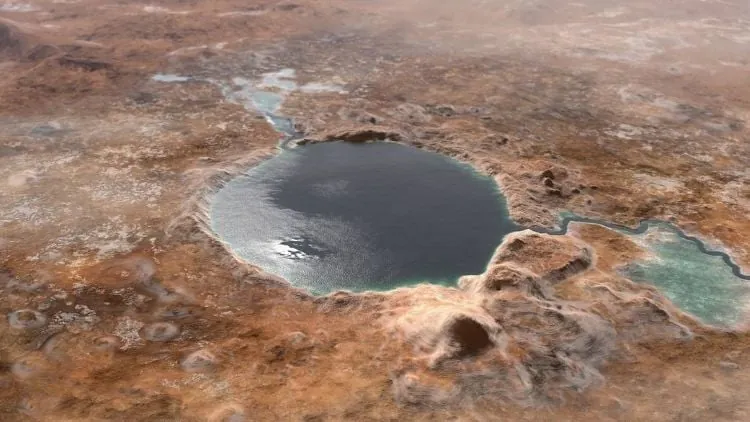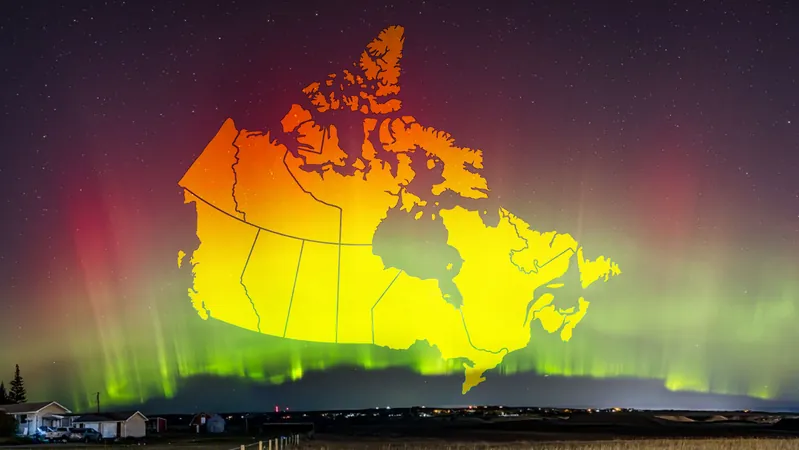
Asteroid 2024 YR4: Not a Threat to Earth, But It Might Still Rain Space Rocks!
2025-07-11
Author: Jacques
The giant asteroid 2024 YR4, once feared to threaten Earth with a collision, is now charting a new, less risky path—at least for us. However, this colossal 200-foot-wide rock might still wreak havoc in unexpected ways!
Moon’s New Threat: A 4% Chance of Impact!
With a drastically reduced chance of striking Earth, 2024 YR4 currently holds a 4% shot at hitting the moon in 2032. Even though this lunar impact won't raze cities below, it could send debris flying toward our planet, causing potential disruptions.
How Will the Impact Play Out?
If the asteroid does hit, it will mark the largest lunar impact in 5,000 years, releasing energy akin to 6 million tons of TNT—an explosion comparable to a sizeable nuclear weapon. To put this in perspective, the bomb dropped on Hiroshima delivered just 15,000 tons of TNT.
Crater of Catastrophe and Meteor Showers Ahead?
The collision would gouge a crater nearly 0.62 miles wide, with a staggering amount of material blasted into space. Although most debris will fall back to the moon, an estimated 10 to 100 million kilograms could escape its gravitational pull. This could trigger meteoroids traveling at speeds of around 22,400 mph, potentially showering Earth's satellites with a meteor storm 10 to 1,000 times denser than average for several days.
High Speeds, Low Risk!
While these meteoroid pieces will come in faster than bullets from firearms—about 11 times quicker than a rifle bullet—Earth's atmosphere will incinerate most debris, preventing harm to life below. Only the largest rocks, around 3.3 feet in diameter, could survive entry.
The Long-Term Impact of Ejecta!
However, some debris could linger in Earth’s orbit for years, posing a longer-term threat to our satellites, which manage everything from communications to weather tracking.
Should We Brace for a New Threat Scale?
Experts like MIT's Richard P. Binzel believe a new measurement system akin to the Torino Scale isn't necessary for a random tape of space rocks hitting the moon—not when the fallout varies so greatly.
The Waiting Game begins!
As we hold our breath for 2028, when 2024 YR4 comes back into view, we can only speculate about its possible impact. Until then, we can keep our fingers crossed and our eyes on the sky, hoping for lunar fireworks that could light up our telescopes!









 Brasil (PT)
Brasil (PT)
 Canada (EN)
Canada (EN)
 Chile (ES)
Chile (ES)
 Česko (CS)
Česko (CS)
 대한민국 (KO)
대한민국 (KO)
 España (ES)
España (ES)
 France (FR)
France (FR)
 Hong Kong (EN)
Hong Kong (EN)
 Italia (IT)
Italia (IT)
 日本 (JA)
日本 (JA)
 Magyarország (HU)
Magyarország (HU)
 Norge (NO)
Norge (NO)
 Polska (PL)
Polska (PL)
 Schweiz (DE)
Schweiz (DE)
 Singapore (EN)
Singapore (EN)
 Sverige (SV)
Sverige (SV)
 Suomi (FI)
Suomi (FI)
 Türkiye (TR)
Türkiye (TR)
 الإمارات العربية المتحدة (AR)
الإمارات العربية المتحدة (AR)